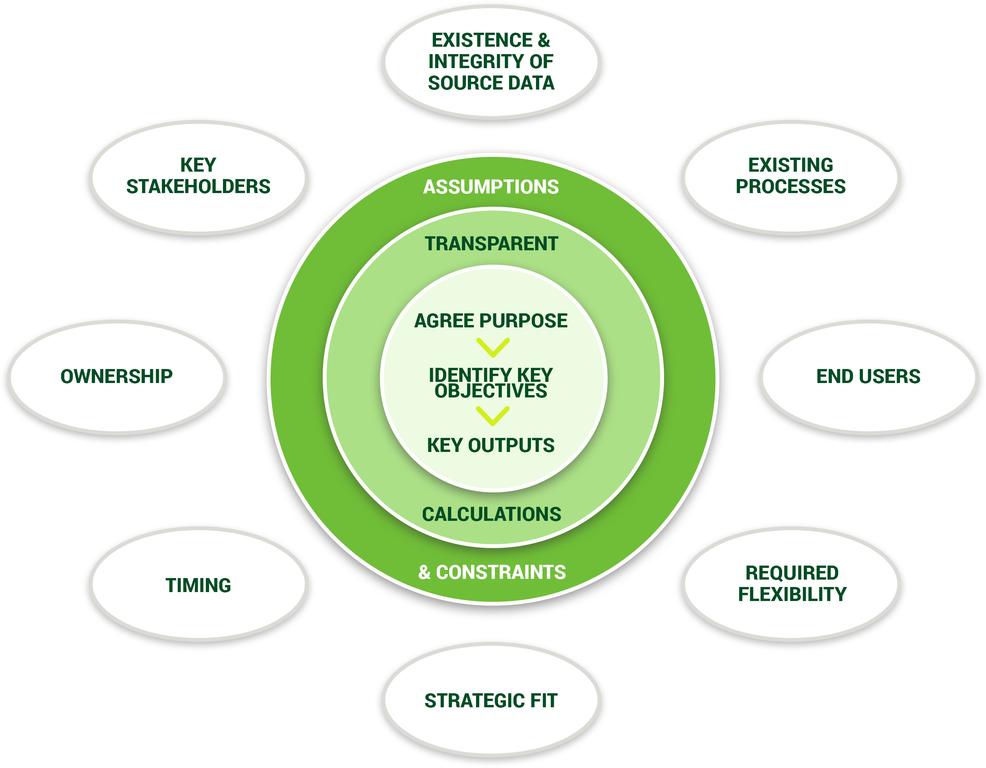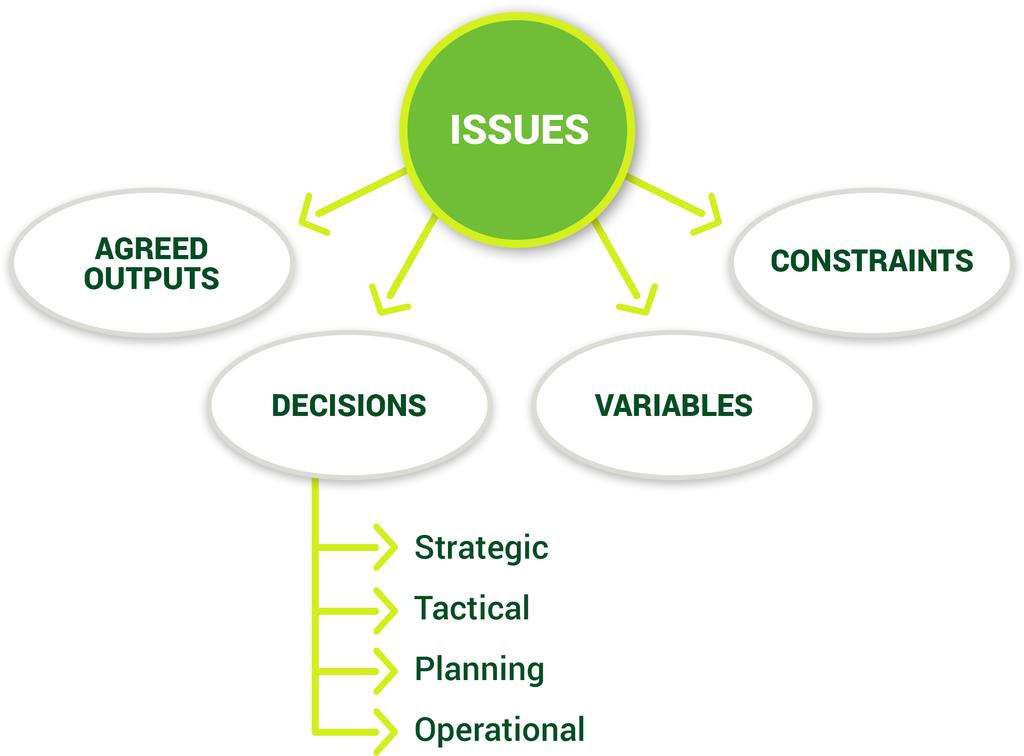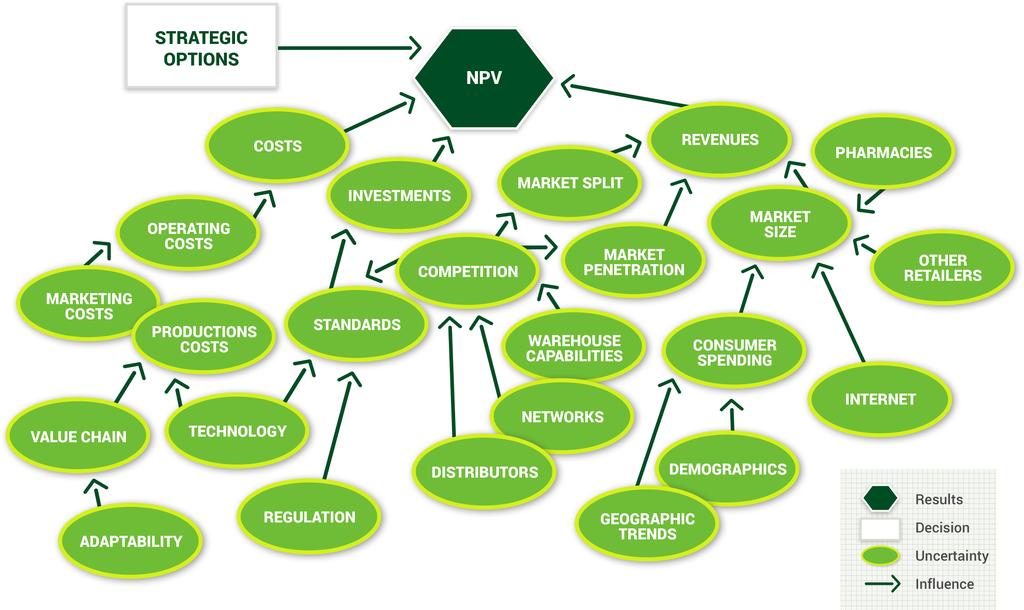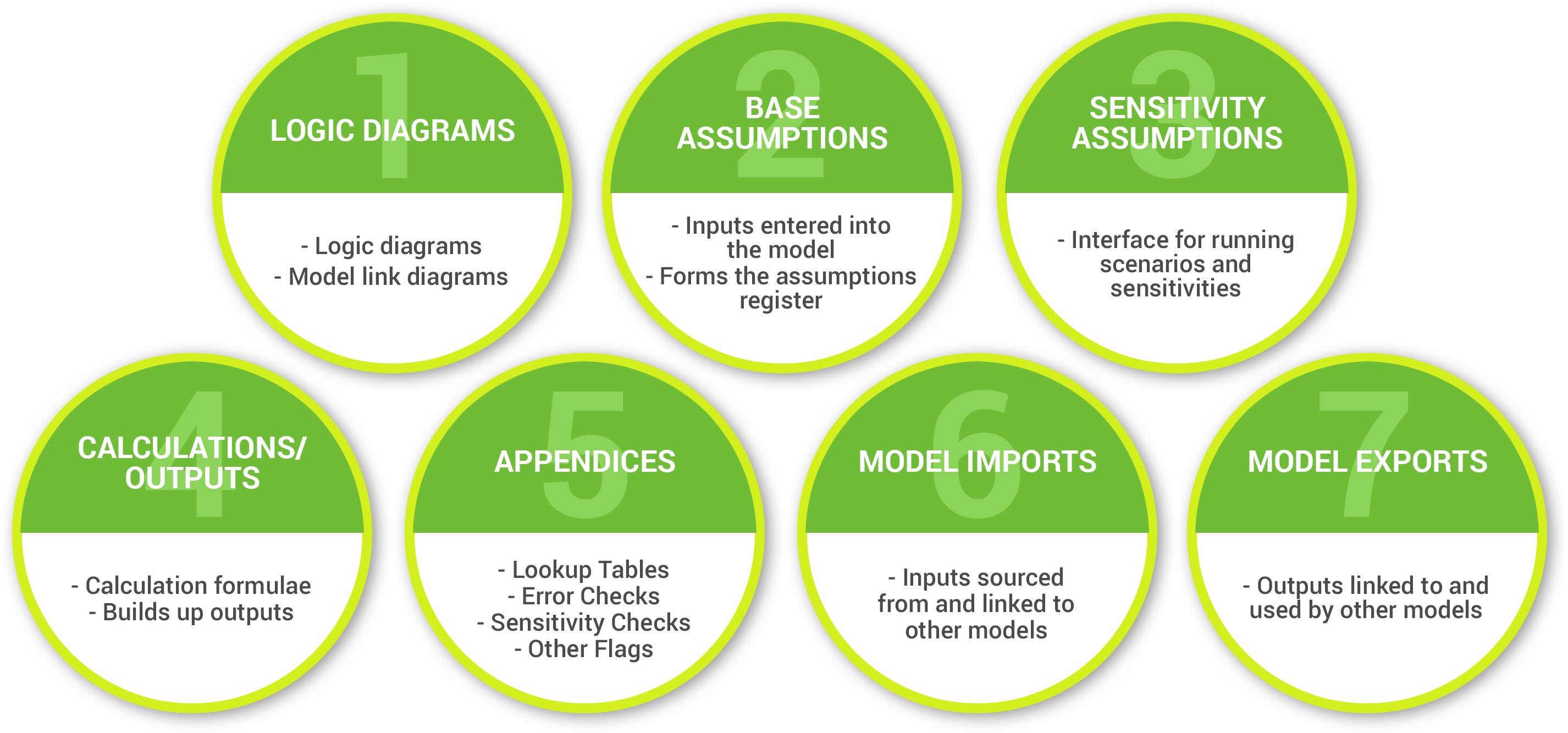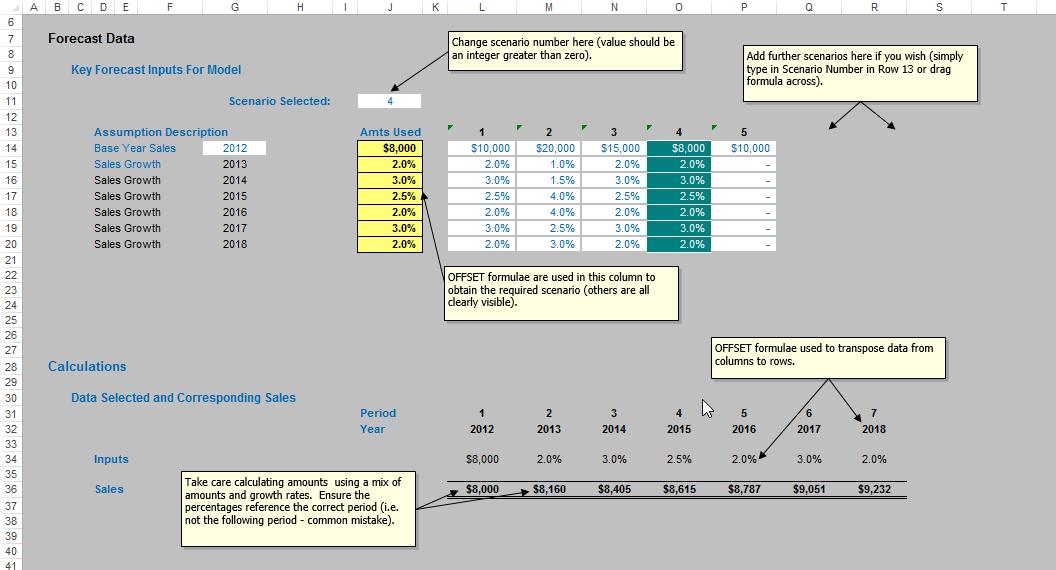The Six Stages of Model Development
Our modelling methodology follows a six-stage construction process:

Scope
- Recognise context, obtain internal ownership, identify key stakeholders and end users.
- Need to define the purpose / objectives, content, flexibility and boundaries of the forecasting model (e.g. key outputs, core assumptions, limitations).
- Ascertain how project will fit in with existing processes (e.g. budgeting, statutory reporting, internal auditing).
Design
- Plotting the high-level relationships identified in the Planning stage helps to understand the main issues.
- Building up logical linkages gives rise to an influence diagram which can readily be used to construct a very simple, yet highly relevant communicative tool and / or strategic model.
- Can be used to evaluate the impact of different choices taken and assess the impact of the variability of forecast data going forward (one indicator of risk).
Implement
- Develop Model User Guide, where necessary.
- Present to key stakeholders.
- Train end users.
- Provide on-going support as required.


